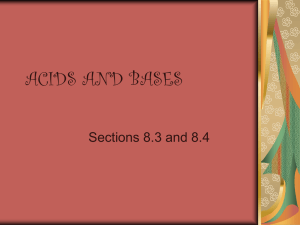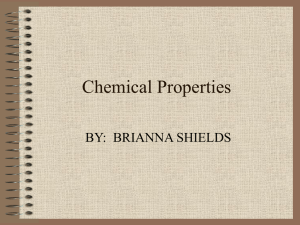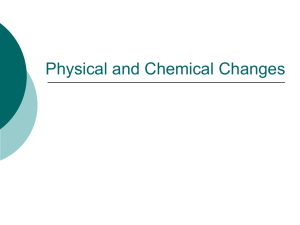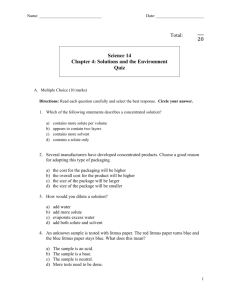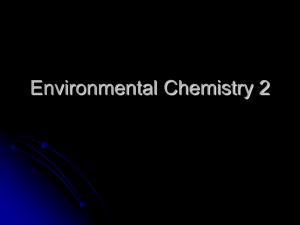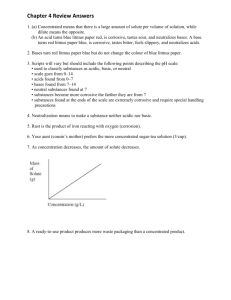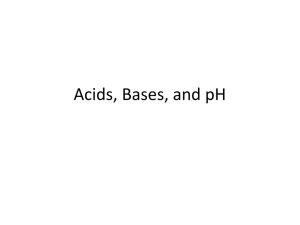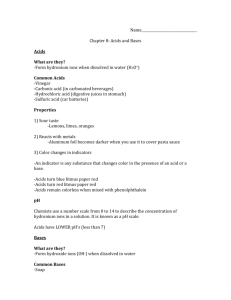Properties of Acids and Bases tr1
advertisement
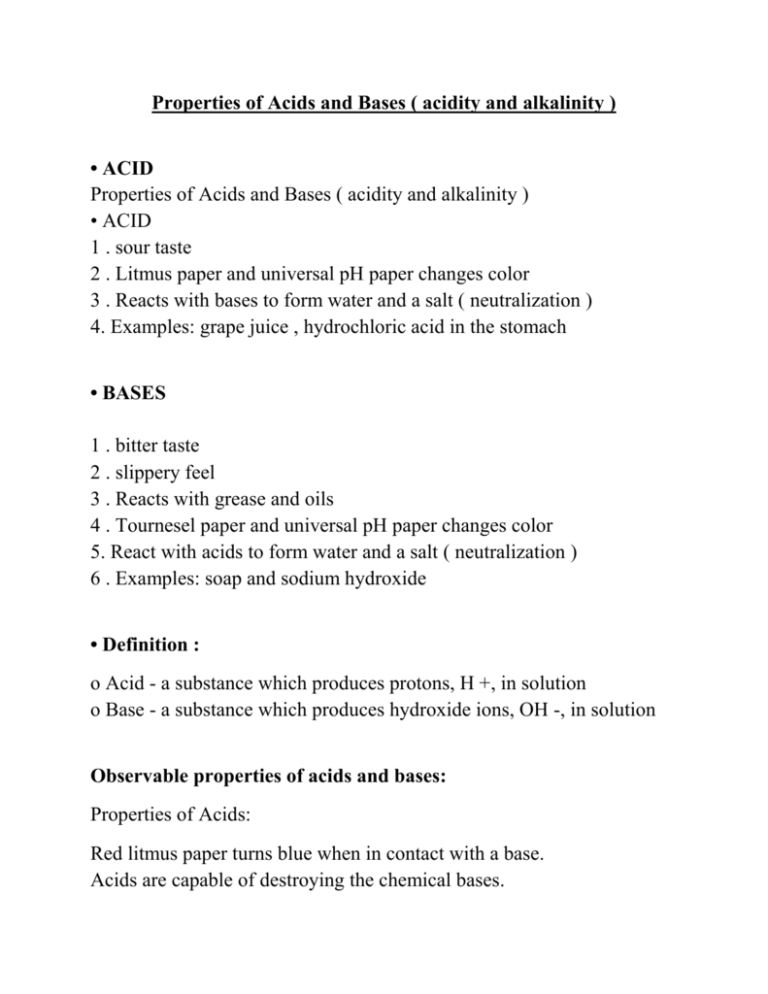
Properties of Acids and Bases ( acidity and alkalinity ) • ACID Properties of Acids and Bases ( acidity and alkalinity ) • ACID 1 . sour taste 2 . Litmus paper and universal pH paper changes color 3 . Reacts with bases to form water and a salt ( neutralization ) 4. Examples: grape juice , hydrochloric acid in the stomach • BASES 1 . bitter taste 2 . slippery feel 3 . Reacts with grease and oils 4 . Tournesel paper and universal pH paper changes color 5. React with acids to form water and a salt ( neutralization ) 6 . Examples: soap and sodium hydroxide • Definition : o Acid - a substance which produces protons, H +, in solution o Base - a substance which produces hydroxide ions, OH -, in solution Observable properties of acids and bases: Properties of Acids: Red litmus paper turns blue when in contact with a base. Acids are capable of destroying the chemical bases. Acids can lead an electric current. The acids react with the alkaline metals and alkaline earth metals , as well as zinc and aluminum. Properties of Bases: Several drugs have a bitter taste because they are alkaline ( bases ) . This is why the medicines for cough syrups we add “cherry flavour.” The flavor is added to change the bitter taste of the drug contained inside. Bases will restore the original color of blue litmus paper , having been reddened by an acid. Bases destroy chemical properties of acids . The bases can drive an electric current. Indicators An indicator detector is a chemical hydrogen ion ( H + ) . Normally , the indicator causes a change in color of the solution depending on the pH . At 25 ° C , the pH of a neutral solution is 7.0 . Solutions with a pH below 7.0 are considered acids, while solutions at a pH value greater than 7.0 is at the base. Examples: litmus paper , universal pH paper , phenolphthalein , bromothymol blue . The pH scale The pH scale pH stands for " potential hydrogen " or " power of hydrogen " . The pH scale measures the acidity or alkalinity of a substance. The pH scale is 0 to 14. A pH of 7 is neutral. A pH below 7 is acidic. A pH greater than 7 is basic. Litmus paper Litmus paper is an indicator that allows scientists to determine whether a substance is acidic, basic or neutral . The red litmus paper turns blue in contact with a base. Red litmus stays red in contact with an acid. Blue litmus paper turns red in contact with an acid. The blue litmus paper stays blue in contact with a base. If a substance is tested with both red and blue litmus paper and no color change is apparent , the substance is neutral. Universal pH paper Universal pH paper is a mixture of different indicators which change color depending on the acidity or alkalinity of the solution.
